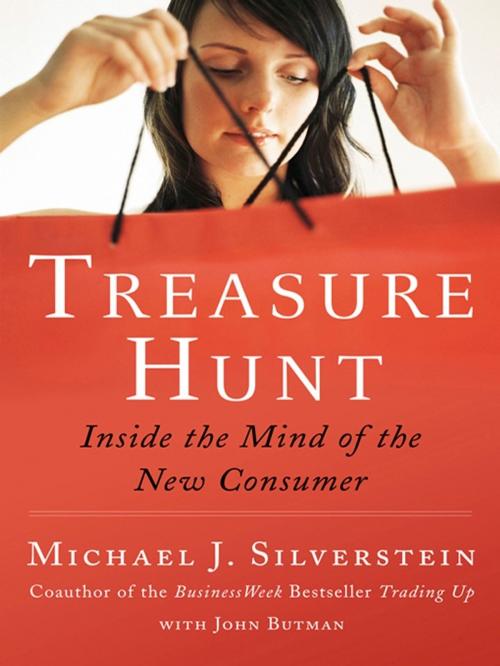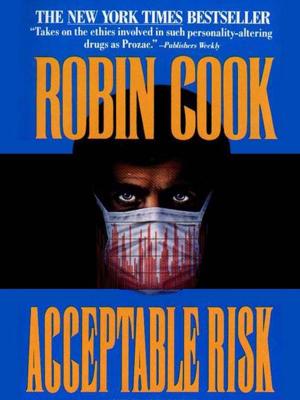Treasure Hunt
Inside the Mind of the New Consumer
Business & Finance, Marketing & Sales, Consumer Behaviour, Advertising & Promotion, Nonfiction, Health & Well Being, Psychology, Social Psychology| Author: | Michael J. Silverstein, John Butman | ISBN: | 9781101218372 |
| Publisher: | Penguin Publishing Group | Publication: | May 4, 2006 |
| Imprint: | Portfolio | Language: | English |
| Author: | Michael J. Silverstein, John Butman |
| ISBN: | 9781101218372 |
| Publisher: | Penguin Publishing Group |
| Publication: | May 4, 2006 |
| Imprint: | Portfolio |
| Language: | English |
The essential follow-up to the BusinessWeek bestseller Trading Up
A BMW in a Costco parking lot? A working class family with a 50-inch plasma TV? What's going on in the mind of the new consumer?
Today's consumers can seem impossible to understand, and even harder to please. For instance, the average mall shopper will spend about $100, then leave when she hits that limit. She'll probably buy shoes rather than clothing, because she doesn't want to think about her dress size. And the store most likely to get her money isn't the one with the nicest display or the deepest discounts-it's the one closest to her parking spot.
In his consulting with dozens of leading companies, Michael J. Silverstein has interviewed thousands of customers, extracting fascinating patterns about what really drives their purchase decisions. His first book, the acclaimed bestseller Trading Up, has taught a generation of marketers about the "new luxury" phenomenon, and why consumers will happily pay a steep premium for goods and services that are emotionally satisfying, from golf clubs to bathroom fixtures to beauty products.
But Trading Up revealed only part of the story of the new consumer. The same middle-class people who are happily trading up at Victoria's Secret and Panera are going on treasure hunts at Costco and Home Depot. And they are often getting as much emotional satisfaction in the discount stores as in the luxury stores. TREASURE HUNT shows how even the most mundane shopping-for things like paper towels and pet food-has become an adventure rather than a tedious chore.
In just about every category, both the high end and the low end are growing and innovation- rich. Many middle-class consumers gladly spend $5 a day for a Starbucks venti latte; others spend forty cents a day on home-brewed coffee, feel good about their frugality, and save up the difference to buy Apple's newest Nano. TREASURE HUNT explains the success of companies as diverse as Dollar General, H. E. Butt, eBay, Commerce Bank, and Tchibo.
But beware: in our bifurcated global market, businesses need a clear strategy for aiming high or low, while avoiding the treacherous middle, where so many have recently stumbled. If your offering isn't exciting enough to inspire trading up, but not enough of a bargain to satisfy the treasure hunters, you'll have no emotional connection with your target audience. And then, as many fallen companies have discovered, your tried-and-true marketing strategies will go into a severe stall.
TREASURE HUNT takes us into the homes of real people making real decisions, and into the CEO's offices of innovative companies finding new ways to accommodate them. Written with the same flair, empathy, and intelligence that made Trading Up an instant classic, this is an essential guide to the moods and habits of the constantly changing consumer.
The essential follow-up to the BusinessWeek bestseller Trading Up
A BMW in a Costco parking lot? A working class family with a 50-inch plasma TV? What's going on in the mind of the new consumer?
Today's consumers can seem impossible to understand, and even harder to please. For instance, the average mall shopper will spend about $100, then leave when she hits that limit. She'll probably buy shoes rather than clothing, because she doesn't want to think about her dress size. And the store most likely to get her money isn't the one with the nicest display or the deepest discounts-it's the one closest to her parking spot.
In his consulting with dozens of leading companies, Michael J. Silverstein has interviewed thousands of customers, extracting fascinating patterns about what really drives their purchase decisions. His first book, the acclaimed bestseller Trading Up, has taught a generation of marketers about the "new luxury" phenomenon, and why consumers will happily pay a steep premium for goods and services that are emotionally satisfying, from golf clubs to bathroom fixtures to beauty products.
But Trading Up revealed only part of the story of the new consumer. The same middle-class people who are happily trading up at Victoria's Secret and Panera are going on treasure hunts at Costco and Home Depot. And they are often getting as much emotional satisfaction in the discount stores as in the luxury stores. TREASURE HUNT shows how even the most mundane shopping-for things like paper towels and pet food-has become an adventure rather than a tedious chore.
In just about every category, both the high end and the low end are growing and innovation- rich. Many middle-class consumers gladly spend $5 a day for a Starbucks venti latte; others spend forty cents a day on home-brewed coffee, feel good about their frugality, and save up the difference to buy Apple's newest Nano. TREASURE HUNT explains the success of companies as diverse as Dollar General, H. E. Butt, eBay, Commerce Bank, and Tchibo.
But beware: in our bifurcated global market, businesses need a clear strategy for aiming high or low, while avoiding the treacherous middle, where so many have recently stumbled. If your offering isn't exciting enough to inspire trading up, but not enough of a bargain to satisfy the treasure hunters, you'll have no emotional connection with your target audience. And then, as many fallen companies have discovered, your tried-and-true marketing strategies will go into a severe stall.
TREASURE HUNT takes us into the homes of real people making real decisions, and into the CEO's offices of innovative companies finding new ways to accommodate them. Written with the same flair, empathy, and intelligence that made Trading Up an instant classic, this is an essential guide to the moods and habits of the constantly changing consumer.















